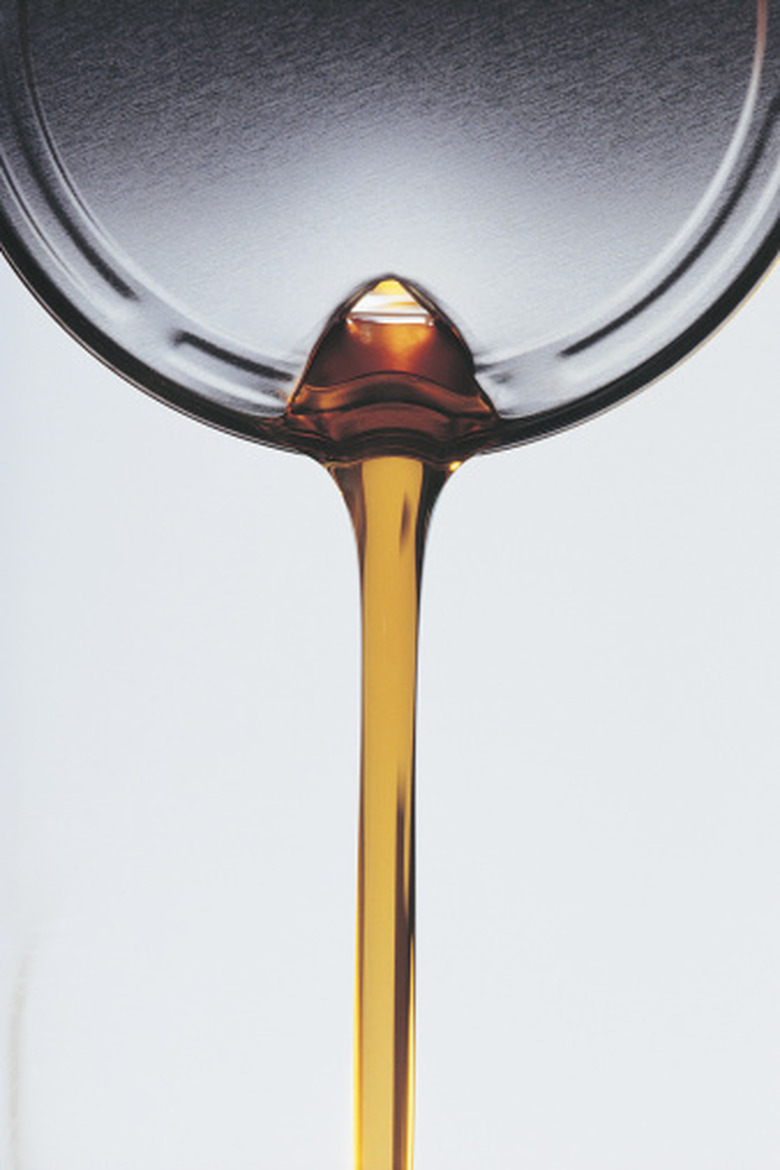How To Convert Zahn Seconds To Centipoise
Various industries, such as paint producers, routinely use the Zahn cup method to find the viscosity of their products for quality control purposes. This method has the advantages of being extremely quick and very simple to perform. The Zahn test uses a metal cup fitted with a handle and with a precisely sized hole drilled in its base. A technician fills the cup with the liquid being tested and measures the length of time over which a steady stream of fluid runs out of the cup. The time that the fluid takes to leave the cup is proportional to its viscosity.
Step 1
Obtain the manufacturer's conversion table for the specific Zahn cup you use to obtain the time reading. There are five different Zahn cups, numbered from 1 to 5, so you must use the correct table for your cup number.
Step 2
Read down the leftmost column of the conversion table until you find the digits of your drain time reading (in seconds) that are before the decimal place. For example, if your drain time was 38.9 seconds, you would look for the number 38. The location of this number on the leftmost column defines the row you will look in to find the centistokes reading corresponding to your drain time.
Step 3
Read across the uppermost row of the conversion table until you find the digits of your drain time reading that are after the decimal place. In the example of 38.9 seconds, you would look for the number 9 in this row. The location of this number on the uppermost row will define the column you look in to find your centistokes reading.
Step 4
Find the point on the conversion table where your specific column and row intersect. At this location, you will find the centistokes reading that corresponds to the drain time you recorded using the Zahn cup.
Step 5
Multiply your value of centistokes by the specific gravity of your fluid (otherwise known as the density in grams per milliliter). This calculation will convert your centistokes reading into centipoise units.
Things Needed
- Zahn cup drain time reading in seconds
- Manufacturer's conversion tables
- Zahn cup number
- Calculator
TL;DR (Too Long; Didn't Read)
Not all manufacturers of Zahn cups provide conversion tables. Others may provide conversion factors that the users apply in mathematical calculations. Some users of Zahn cups do not bother to translate their readings into viscosity units, but simply use the readings in seconds to compare fluids tested under the same conditions. The Zahn cup readings will change with temperature since temperature can drastically affect viscosity. Ensure that your test was done at the correct temperature for the conversion table to be applicable.
Cite This Article
MLA
Judge, Michael. "How To Convert Zahn Seconds To Centipoise" sciencing.com, https://www.sciencing.com/convert-zahn-seconds-centipoise-8385257/. 24 April 2017.
APA
Judge, Michael. (2017, April 24). How To Convert Zahn Seconds To Centipoise. sciencing.com. Retrieved from https://www.sciencing.com/convert-zahn-seconds-centipoise-8385257/
Chicago
Judge, Michael. How To Convert Zahn Seconds To Centipoise last modified August 30, 2022. https://www.sciencing.com/convert-zahn-seconds-centipoise-8385257/
